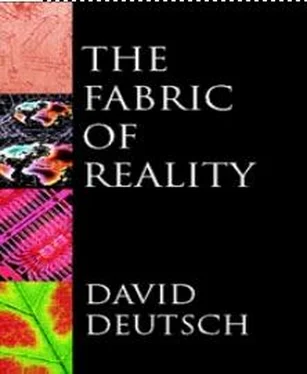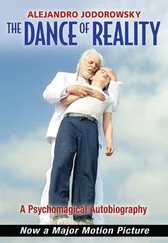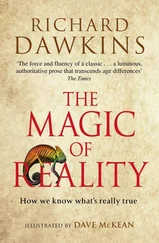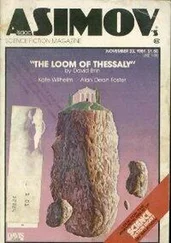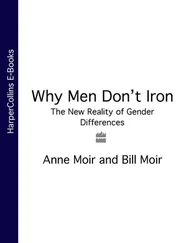David Deutch - The Fabric of Reality
Здесь есть возможность читать онлайн «David Deutch - The Fabric of Reality» весь текст электронной книги совершенно бесплатно (целиком полную версию без сокращений). В некоторых случаях можно слушать аудио, скачать через торрент в формате fb2 и присутствует краткое содержание. ISBN: , Жанр: Физика, Философия, на английском языке. Описание произведения, (предисловие) а так же отзывы посетителей доступны на портале библиотеки ЛибКат.
- Название:The Fabric of Reality
- Автор:
- Жанр:
- Год:неизвестен
- ISBN:0-7139-9061-9
- Рейтинг книги:4 / 5. Голосов: 2
-
Избранное:Добавить в избранное
- Отзывы:
-
Ваша оценка:
- 80
- 1
- 2
- 3
- 4
- 5
The Fabric of Reality: краткое содержание, описание и аннотация
Предлагаем к чтению аннотацию, описание, краткое содержание или предисловие (зависит от того, что написал сам автор книги «The Fabric of Reality»). Если вы не нашли необходимую информацию о книге — напишите в комментариях, мы постараемся отыскать её.
The Fabric of Reality — читать онлайн бесплатно полную книгу (весь текст) целиком
Ниже представлен текст книги, разбитый по страницам. Система сохранения места последней прочитанной страницы, позволяет с удобством читать онлайн бесплатно книгу «The Fabric of Reality», без необходимости каждый раз заново искать на чём Вы остановились. Поставьте закладку, и сможете в любой момент перейти на страницу, на которой закончили чтение.
Интервал:
Закладка:
As I have explained, the defence in each case depends on adducing explanations from some of the other strands. We are not merely ‘chemical scum’, because (for instance) the gross behaviour of our planet, star and galaxy depend on an emergent but fundamental physical quantity: the knowledge in that scum. The creation of useful knowledge by science, and adaptations by evolution, must be understood as the emergence of the self-similarity that is mandated by a principle of physics, the Turing principle. And so on.
Thus the problem with taking any of these fundamental theories individually as the basis of a world-view is that they are each, in an extended sense, reductionist. That is, they have a monolithic explanatory structure in which everything follows from a few extremely deep ideas. But that leaves aspects of the subject entirely unexplained. In contrast, the explanatory structure that they jointly provide for the fabric of reality is not hierarchical: each of the four strands contains principles which are ‘emergent’ from the perspective of the other three, but nevertheless help to explain them.
Three of the four strands seem to rule out human beings and human values from the fundamental level of explanation. The fourth, epistemology, makes knowledge primary but gives no reason to regard epistemology itself as having relevance beyond the psychology of our own species. Knowledge seems a parochial concept until we consider it from a multiverse perspective. But if knowledge is of fundamental significance, we may ask what sort of role now seems natural for knowledge-creating beings such as ourselves in the unified fabric of reality. This question has been explored by the cosmologist Frank Tipler. His answer, the omega-point theory, is an excellent example of a theory which is, in the sense of this book, about the fabric of reality as a whole. It is not framed within any one strand, but belongs irreducibly to all four. Unfortunately Tipler himself, in his book The Physics of Immortality, makes exaggerated claims for his theory which have caused most scientists and philosophers to reject it out of hand, thereby missing the valuable core idea which I shall now explain.
From my own perspective, the simplest point of entry to the omega-point theory is the Turing principle. A universal virtual-reality generator is physically possible. Such a machine is able to render any physically possible environment, as well as certain hypothetical and abstract entities, to any desired accuracy. Its computer therefore has a potentially unlimited requirement for additional memory, and may run for an unlimited number of steps. This was trivial to arrange in the classical theory of computation, so long as the universal computer was thought to be purely abstract. Turing simply postulated an infinitely long memory tape (with, as he thought, self-evident properties), a perfectly accurate processor requiring neither power nor maintenance, and unlimited time available. Making the model more realistic by allowing for periodic maintenance raises no problem of principle, but the other three requirements — unlimited memory capacity, and an unlimited running time and energy supply — are problematic in the light of existing cosmological theory. In some current cosmological models, the universe will recollapse in a Big Crunch after a finite time, and is also spatially finite. It has the geometry of a ‘3-sphere’, the three-dimensional analogue of the two-dimensional surface of a sphere. On the face of it, such a cosmology would place a finite bound on both the memory capacity and the number of processing steps the machine could perform before the universe ended. This would make a universal computer physically impossible, so the Turing principle would be violated. In other cosmological models the universe continues to expand for ever and is spatially infinite, which might seem to allow for an unlimited source of material for the manufacture of additional memory. Unfortunately, in most such models the density of energy available to power the computer would diminish as the universe expanded, and would have to be collected from ever further afield. Because physics imposes an absolute speed limit, the speed of light, the computer’s memory accesses would have to slow down and the net effect would again be that only a finite number of computational steps could be performed.
The key discovery in the omega-point theory is that of a class of cosmological models in which, though the universe is finite in both space and time, the memory capacity, the number of possible computational steps and the effective energy supply are all unlimited. This apparent impossibility can happen because of the extreme violence of the final moments of the universe’s Big Crunch collapse. Spacetime singularities, like the Big Bang and the Big Crunch, are seldom tranquil places, but this one is far worse than most. The shape of the universe would change from a 3-sphere to the three-dimensional analogue of the surface of an ellipsoid. The degree of deformation would increase, and then decrease, and then increase again more rapidly with respect to a different axis. Both the amplitude and frequency of these oscillations would increase without limit as the final singularity was approached, so that a literally infinite number of oscillations would occur even though the end would come within a finite time. Matter as we know it would not survive: all matter, and even the atoms themselves, would be wrenched apart by the gravitational shearing forces generated by the deformed spacetime. However, these shearing forces would also provide an unlimited source of available energy, which could in principle be used to power a computer. How could a computer exist under such conditions? The only ‘stuff’ left to build computers with would be elementary particles and gravity itself, presumably in some highly exotic quantum states whose existence we, still lacking an adequate theory of quantum gravity, are currently unable to confirm or deny. (Observing them experimentally is of course out of the question.) If suitable states of particles and the gravitational field exist, then they would also provide an unlimited memory capacity, and the universe would be shrinking so fast that an infinite number of memory accesses would be feasible in a finite time before the end. The end-point of the gravitational collapse, the Big Crunch of this cosmology, is what Tipler calls the omega point.
Now, the Turing principle implies that there is no upper bound on the number of computational steps that are physically possible. So, given that an omega-point cosmology is (under plausible assumptions) the only type in which an infinite number of computational steps could occur, we can infer that our actual spacetime must have the omega-point form. Since all computation would cease as soon as there were no more variables capable of carrying information, we can infer that the necessary physical variables (perhaps quantum-gravitational ones) do exist right up to the omega point.
A sceptic might argue that this sort of reasoning involves a massive, unjustified extrapolation. We have experience of ‘universal’ computers only in a most favourable environment which does not remotely resemble the final stages of the universe. And we have experience of them performing only a finite number of computational steps, using only a finite amount of memory. How can it be valid to extrapolate from those finite numbers to infinity? In other words, how can we know that the Turing principle in its strong form is strictly true? What evidence is there that reality supports more than approximate universality?
This sceptic is, of course, an inductivist. Furthermore, this is exactly the type of thinking that (as I argued in the previous chapter) prevents us from understanding our best theories and improving upon them. What is or is not an ‘extrapolation’ depends on which theory one starts with. If one starts with some vague but parochial concept of what is ‘normal’ about the possibilities of computation, a concept uninformed by the best available explanations in that subject, then one will regard any application of the theory outside familiar circumstances as ‘unjustified extrapolation’. But if one starts with explanations from the best available fundamental theory, then one will consider the very idea that some nebulous ‘normalcy’ holds in extreme situations to be an unjustified extrapolation. To understand our best theories, we must take them seriously as explanations of reality, and not regard them as mere summaries of existing observations. The Turing principle is our best theory of the foundations of computation. Of course we know only a finite number of instances confirming it — but that is true of every theory in science. There remains, and will always remain, the logical possibility that universality holds only approximately. But there is no rival theory of computation claiming that. And with good reason, for a ‘principle of approximate universality’ would have no explanatory power. If, for instance, we want to understand why the world seems comprehensible, the explanation might be that the world is comprehensible. Such an explanation can, and in fact does, fit in with other explanations in other fields. But the theory that the world is half -comprehensible explains nothing and could not possibly fit in with explanations in other fields unless they explained it. It simply restates the problem and introduces an unexplained constant, one-half. In short, what justifies assuming that the full Turing principle holds at the end of the universe, is that any other assumption spoils good explanations of what is happening here and now.
Читать дальшеИнтервал:
Закладка:
Похожие книги на «The Fabric of Reality»
Представляем Вашему вниманию похожие книги на «The Fabric of Reality» списком для выбора. Мы отобрали схожую по названию и смыслу литературу в надежде предоставить читателям больше вариантов отыскать новые, интересные, ещё непрочитанные произведения.
Обсуждение, отзывы о книге «The Fabric of Reality» и просто собственные мнения читателей. Оставьте ваши комментарии, напишите, что Вы думаете о произведении, его смысле или главных героях. Укажите что конкретно понравилось, а что нет, и почему Вы так считаете.
